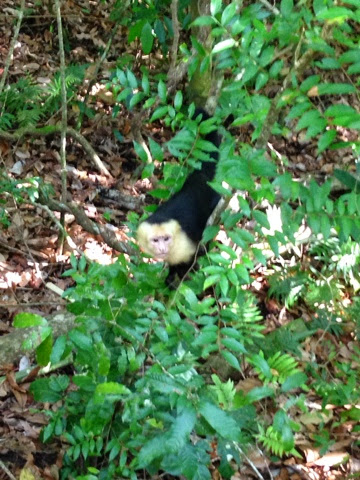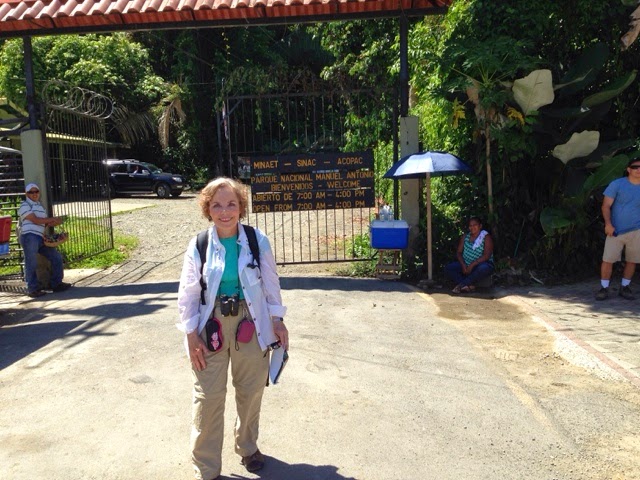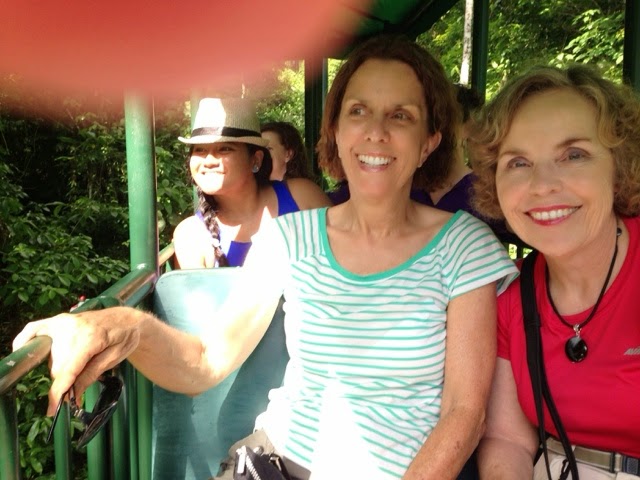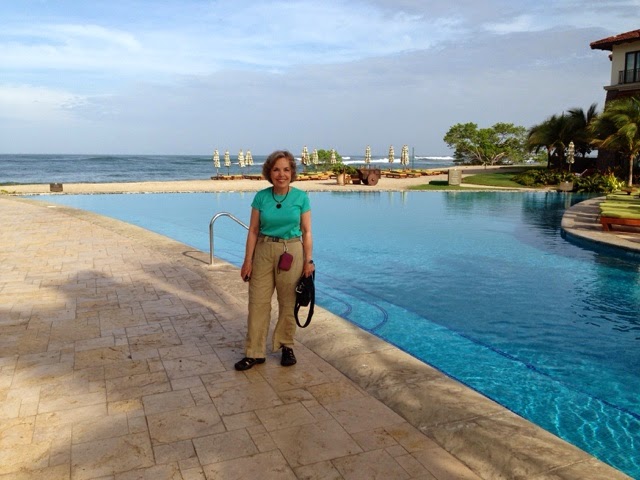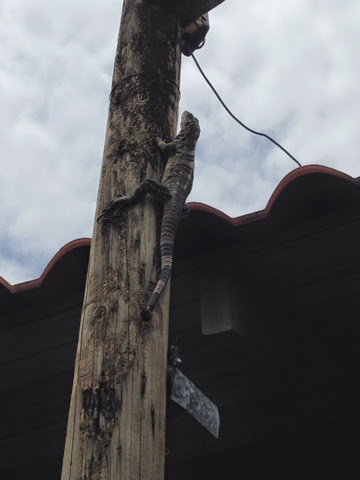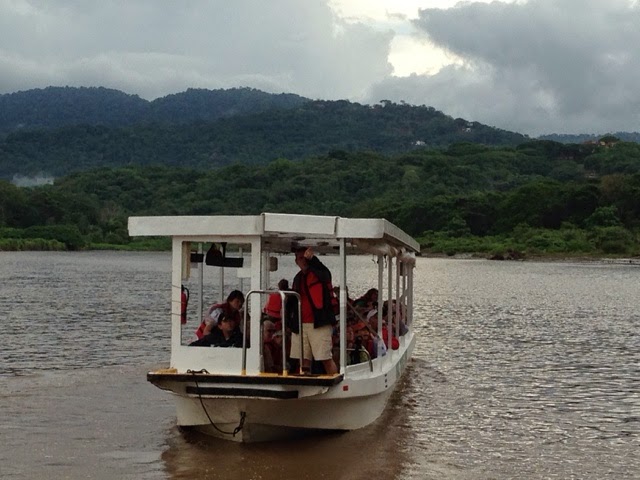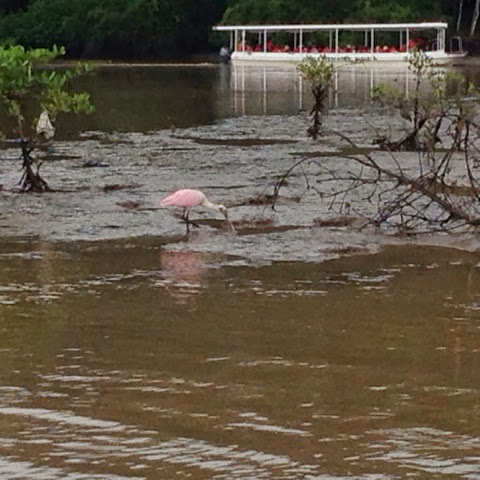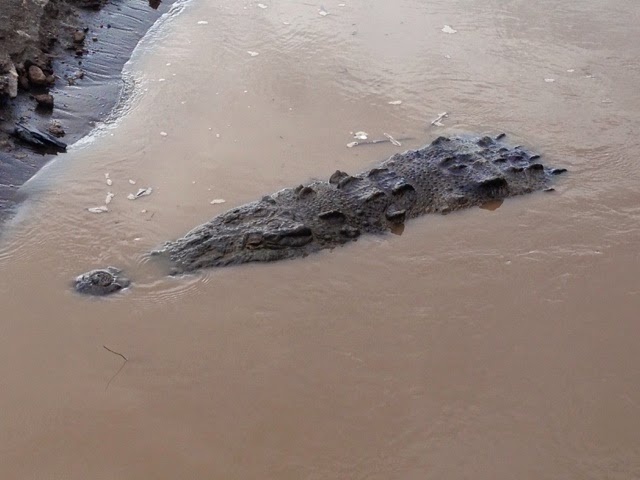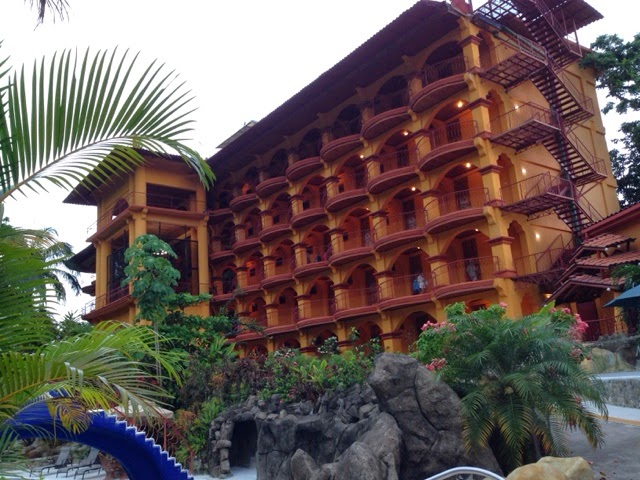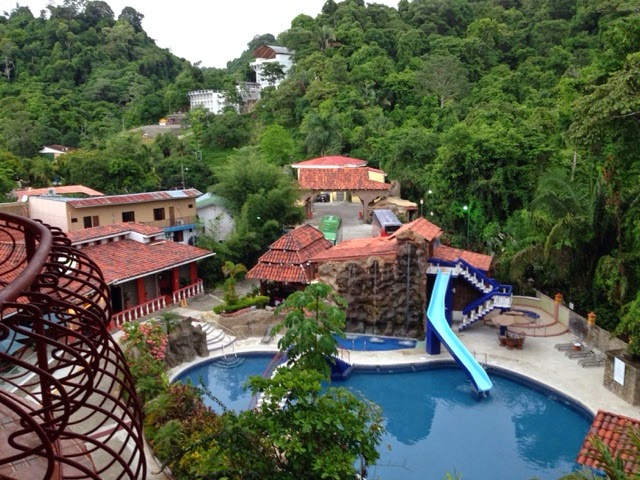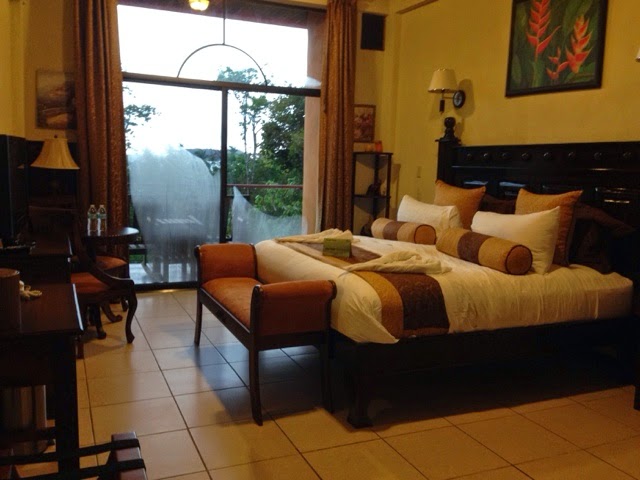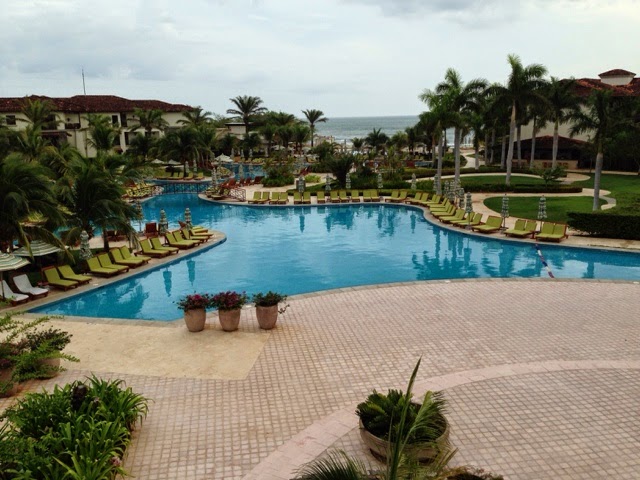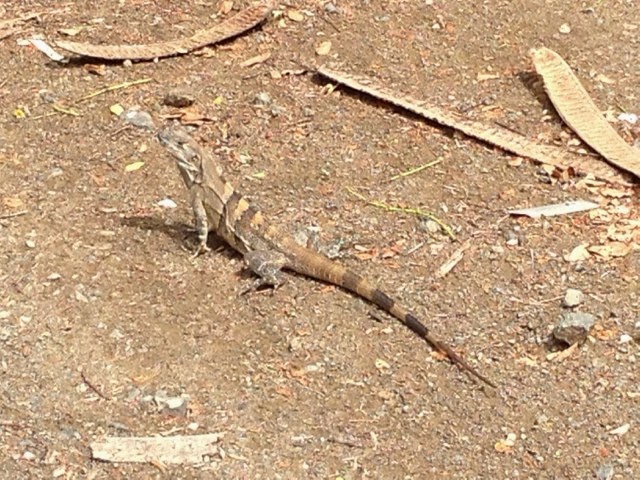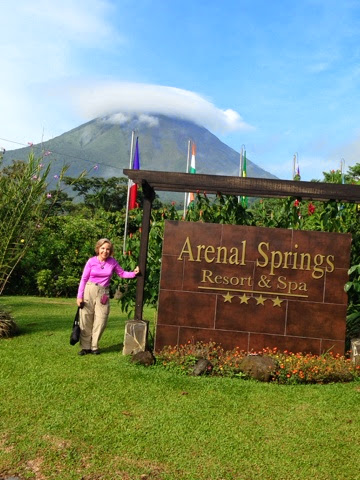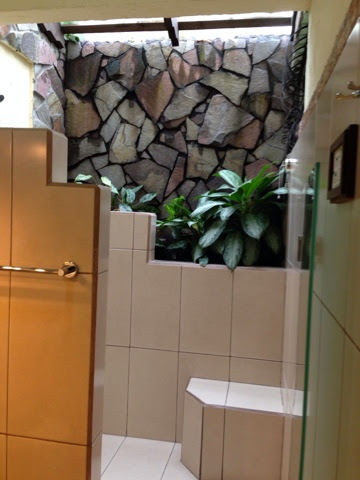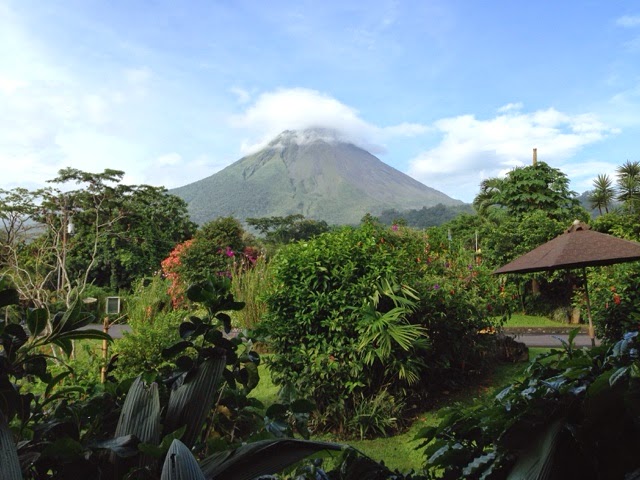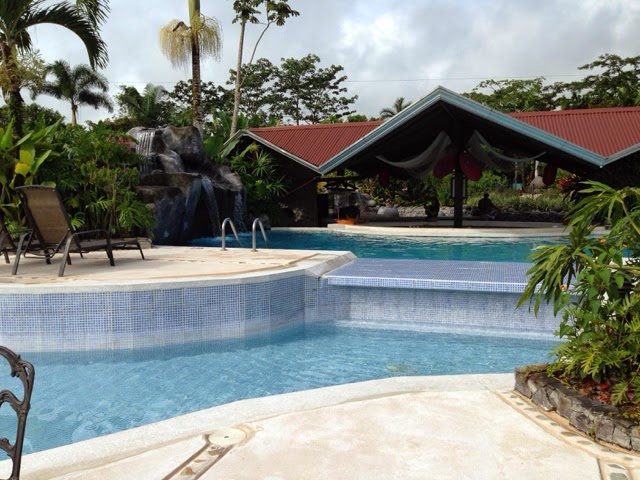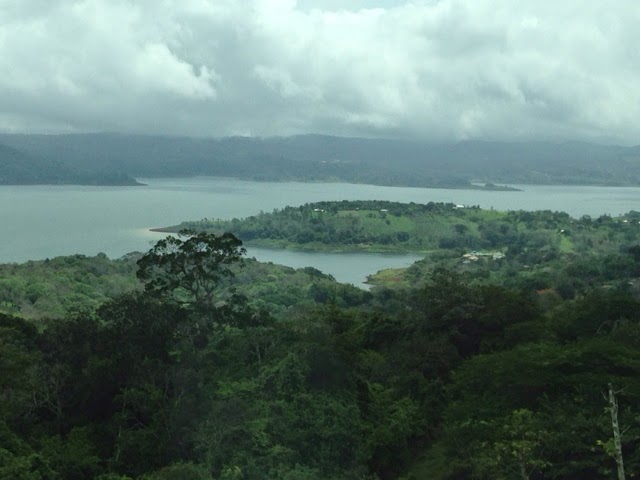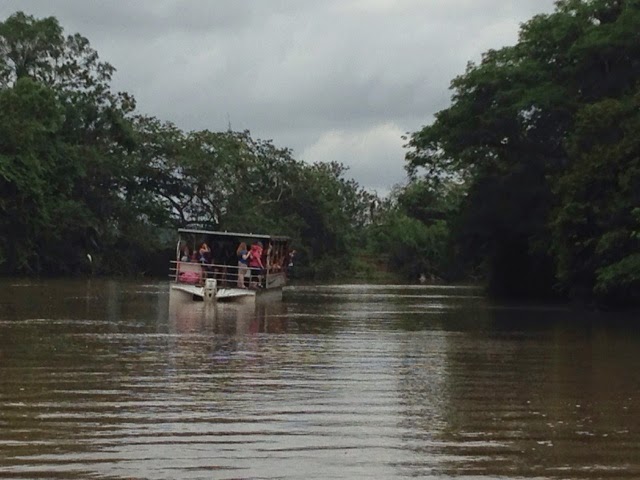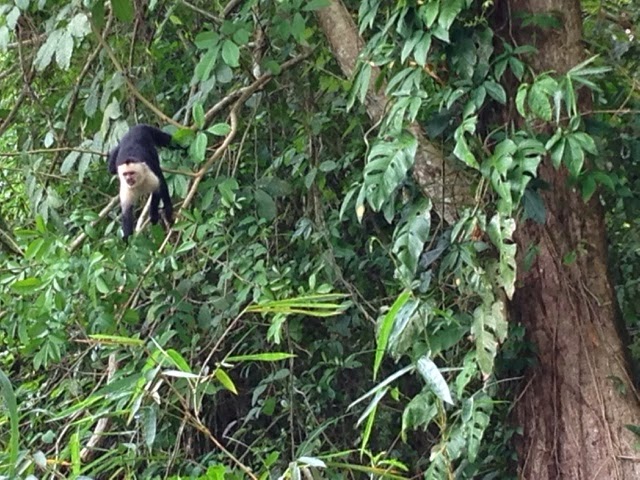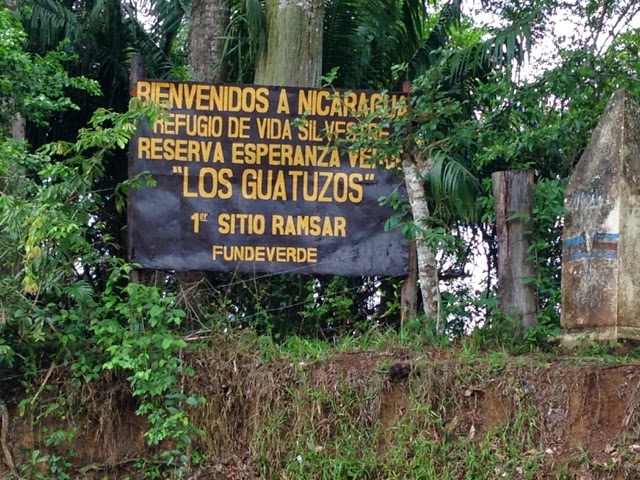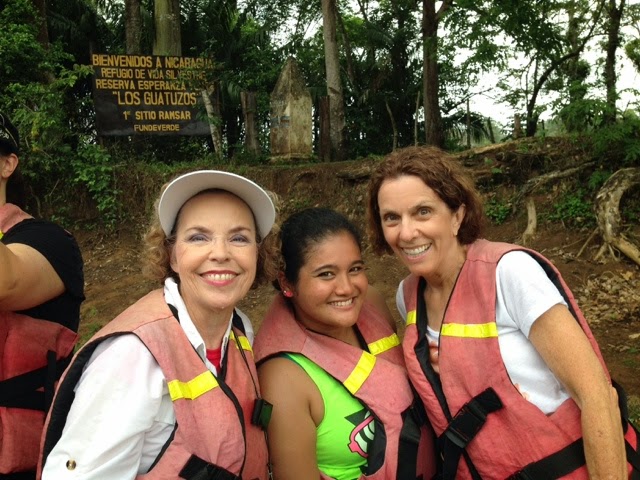We got up very early this morning to visit Manuel Antonio National Park. We met Aaron at 7 am when the park opened, hoping to avoid some of the crowds and heat.
While we walked along the main road in the park with him, we spotted a two-toed sloth asleep high in a tree. They apparently sleep 18 hours a day. He had himself wrapped securely in the fork of two branches, looking like a big lump in the tree. We also saw Howler monkeys and a variety of ubiquitous lizards, all sizes.
Aaron walked with us to the beach in the park. Then some of our group decided to swim in the waves, which were much safer than the beach at the Mariott. Several of us decided to hike the trails in the park. They were quite beautiful, with stairs to accommodate the elevation gains and the occasional deck to watch for wildlife. At one of these, we were watching two white-faced (capuchin) monkeys cavorting in the trees. Then they started coming closer while we enthusiastically snapped photos of them. Suddenly one jumped onto the deck, and then up to the deck's railing where I was eyeball to eyeball with him. Suddenly his companion had arrived on the deck and he was none too happy. He started jumping up and down, barring his teeth (with fangs ) and claws. The other one took his cues from him and followed suit. They literally started chasing us and ran us off the deck. And they move really fast. We figured they expected to be fed and got very mad when they weren't.
Along the way we saw some beautiful sandy beaches and lots of lush vegetation. After about a mile, the group split off and I continued on some trail spurs. This part of the park is actually a tiny peninsula and there were beaches on both sides of the trail.
When I returned to the beach to rejoin the others, I discovered more capuchin monkeys. They apparently had wreaked havoc on the bathers -- getting into their backpacks and stealing things. One woman had her cell phone stolen by a monkey and the ranger was able to retrieve it. She even had a bite mark on the phone to prove the encounter.
About 10 am we returned to the hotel. On the way out, we saw a fawn, which even allowed us to touch him. I was surprised to learn they have white-tail deer here, just like us, but the big cats keep the population under control. Remember, hunting is illegal in all of Costa Rica.
Afterwards, I took a walk to the hotel beach, which was actually a public beach. The path was lined with some very small huts selling simple string jewelry and other handcrafts. I bought two necklaces which have been carved from from a tagua nut, a palm tree nut, which were among the most authentic souvenirs I could find.
We were still able to go back to our rooms to clean up before boarding the bus. It was a good thing because when I got to my room, I realized I was soaking wet. Every sweat gland I own must have been working overtime. Even my entire pair of LONG pants was wet, not just the waist. I had worn long pants as protection against bugs and mosquitos, but fortunately, we encountered very few everywhere on this trip.
We left about 11:30 and had a 1-1/2 hour bus ride to a park-like area near Jaco. It was a tourist park with a restaurant, zip line and tram ride. We ate lunch there and then took a tram ride through and above a tropical transitional rainforest. There were 8 of us in a little tram car and we had great views of the vegetation as well as the forest floor. We saw another sloth, this one beige, just curled up around a branch in a tree. We also saw (in order of photos) a cashew tree, which we learned is part of the avocado family; large leaf begonias, which they use to make tea to control high blood pressure; and epiphytes, which are plants that receive their nourishment from the air and rain, but are attached to the tall trees. Many of the animals that live in the trees drink their water from the leaves of these plants instead of going down to the streams where they might be eaten by one of the big cats, like jaquars, that populate the forest. We also saw leaf cutter ants up close, as they carried large pieces of leaves to nourish the mushrooms that they eat. (They are real farmers!)
Then back on the bus for another 1-1/2 hour bus ride to San Jose. We stayed at a Quality Inn near the airport - nice but nothing like the luxury we have experienced.
Our farewell dinner was bittersweet, with lots of hugs and goodbyes. Amazing how we all bonded. We even had a group photo taken. Mine is not the best but it gives you some idea of the diversity of our group and our connections.
Home after breakfast tomorrow. A good time had by all.


